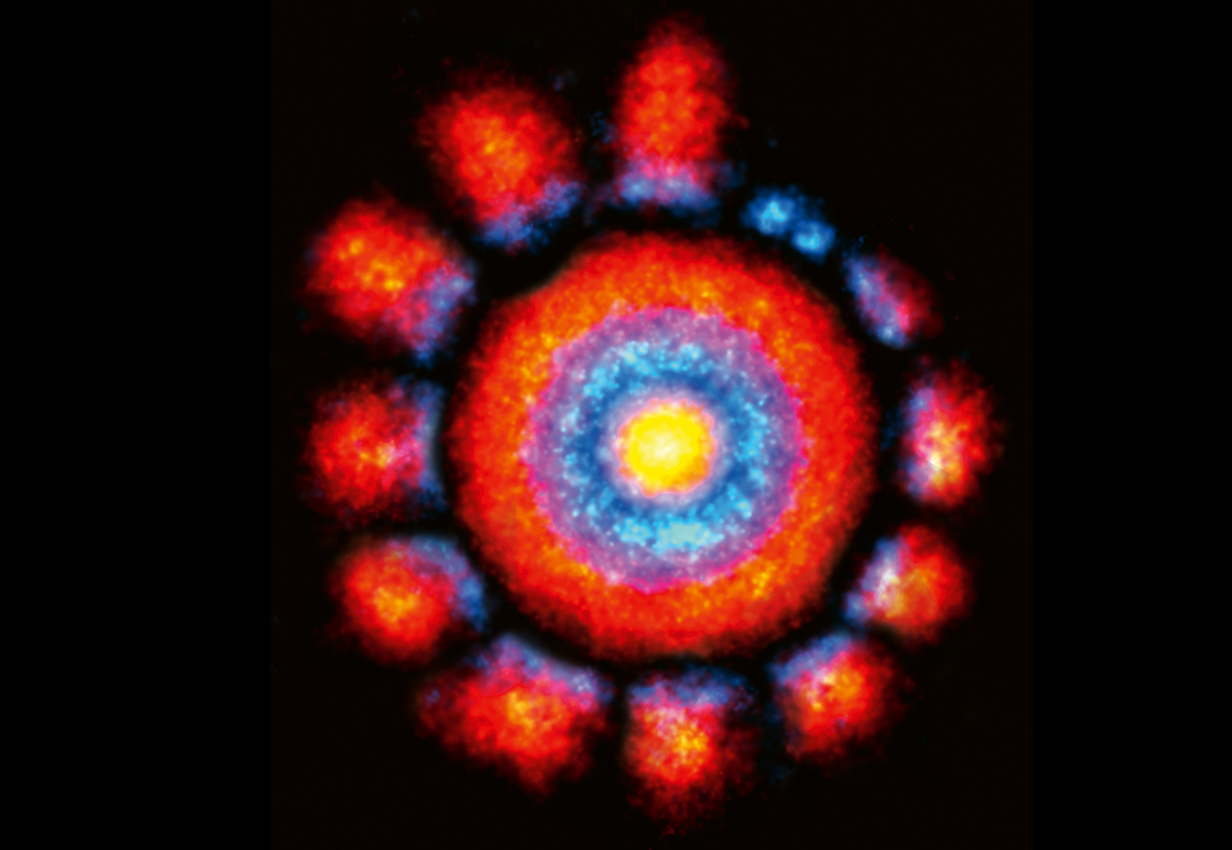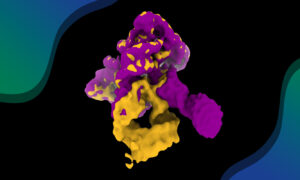
The proteins behind hungry cells
EMBL researchers visualise the proteins needed to capture molecules and bring them into a cell

EMBL scientists have used super-resolution microscopy to see the protein machinery used by cells to ‘eat’ nutrients and other molecules. The research, published in Cell, clarifies how 23 of the most important proteins involved in this task organise and assemble themselves. EMBL group leader Jonas Ries led the research alongside collaborators Marko Kaksonen and François Nédélec. Researchers imaged more than 100,000 sites on yeast cell membranes, where molecules are taken into the cell in a process known as endocytosis. They discovered that different proteins gather at the membrane in a precise set of ring shapes. These act as a template to recruit molecules of a protein known as actin to pull the membrane inwards and surround external molecules, ready to bring them inside the cell. Computer simulations (below) allowed them to get a glimpse of how actin makes endocytosis so efficient. This information could also help researchers understand what happens on the cell surface when cells move or divide, both in yeast and human cells at the nanoscale level.
Proteins gather at the cell membrane and form a ring (blue). From this ring, a network of actin is formed (pink). The more actin that binds, the greater the force that it exerts on the membrane (green) in the centre of the ring, pulling this part of the membrane into the cell. Eventually this membrane is pinched off, forming a vesicle containing the molecules from outside the cell. VIDEO: Serge Dmitrieff/EMBL



